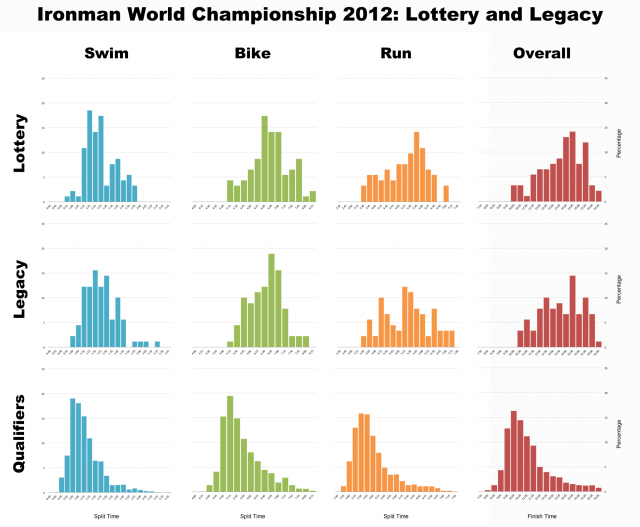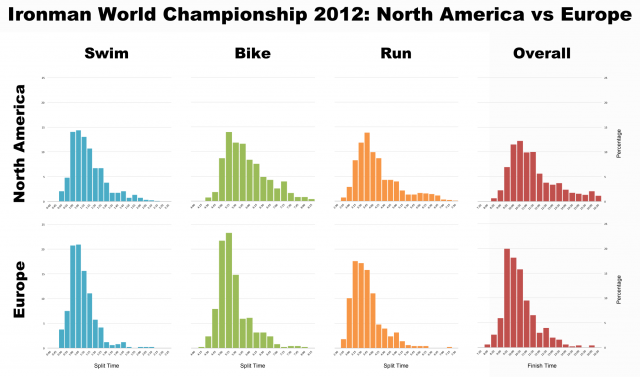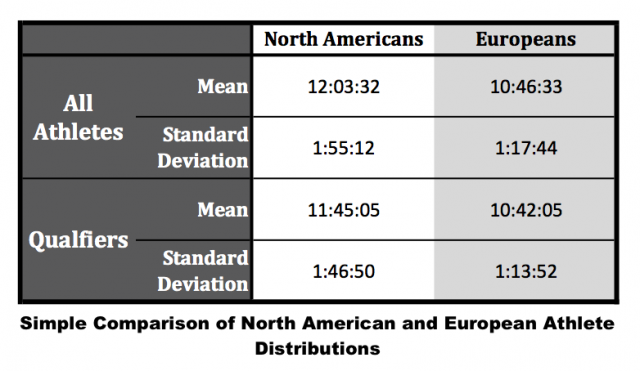While the majority of the field at the Ironman World Championship have qualified for their place a proportion of athletes have gained entry via other means, primarily the lottery and the new legacy programs. Naturally the assumption is that not having proved themselves at a previous Ironman these 200 athletes will be filling out the slower end of the field. Whether a World Championship should have lottery entry is a debate for another time – the history behind it is well known – but with the majority of these entrants coming from the US or Canada (83% of lottery places and 49% of legacy places went to North Americans) it is worth considering a question asked on my previous post: do these athletes skew the North American results?
The answer was entirely dependent on whether I could find a list of lottery and legacy athletes in order to separate them from the field. As usual ironman.com failed to provide me with any useful information, but fortunately I found lottery results at RunTri and Legacy results at Lava Magazine. In good Ironman tradition the data was a mess, so while I had names it took a further half hour to produce a list that I could automatically match against my 2012 Kona results with any success. Having correctly identified over 90% of the lottery and legacy athletes I thought it was worth testing the theory that they are slower than qualifiers.
Unsurprisingly, they are. The distribution of times for both the lottery and legacy group share more in common with your typical Ironman than with the athletes who have qualified. Removing these athletes from the comparison of European and North American athletes should give a clearer picture as to the performance of qualifiers and likely narrow the gap between the two territories.
The impact is noticeable for the North American athletes in the graph above, without the lottery and legacy spots the left skew becomes more prominent as some of the weight is removed from the right hand tail of the graph. With far fewer Europeans among the lottery and legacy athletes the affect is much less pronounced. But the situation remains that there are more European athletes going under 10 hours, both as a proportion of their group and in absolute terms. The European curve remains a faster, tighter grouping.
The gap narrows slightly by eliminating the lottery and legacy slots as indicated by the mean finishing times in the table above. If we only consider the fastest 150 athletes from each territory it’s closer still with mean finishing times of 9:33:26 for the Europeans and 9:48:33 for the North Americans (standard deviations are 21:51 and 21:22 respectively). But the Europeans continue to hold the lead at Kona in 2012, whether that is true in general for Ironman is a broader question.







